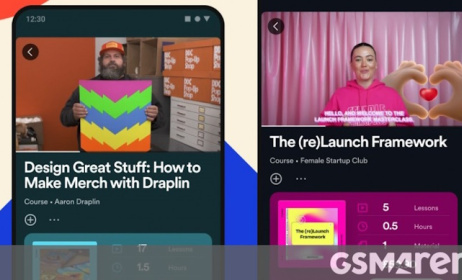Digital music sales overtake physical - global report
The global music market achieved a new milestone in 2015 as digital sales became the primary revenue stream for recorded music, overtaking physical sales.
 The IFPI has released its 2016 Global Music Report.
The IFPI has released its 2016 Global Music Report.
This is according to the latest edition of the the International Federation of Phonographic Industry's Global Music Report, which was published on 12 April. The annual IFPI report analyses official data from music industries all over the world, including Africa.
The latest report shows that digital sales contributed 45% of industry revenues, overtaking sales of physical formats at 39%. The shift follows last year's report, which found that revenues from digital music services had matched those from physical sales for the first time in 2014.
After digital and physical sales, performance rights revenues to producers and artists (at 14%) accounted for the bulk of the remainder.
Growth at last
The latest report indicates that the industry’s digital revenues rose by 10.2% to $6.7 billion, driving growth in total industry revenues by 3.2% to $15 billion. The last time the global music industry enjoyed significant, measurable growth was in 1998, when it grew at 4.8%.
Several other factors are driving the rise of music streaming globally. The report shows that worldwide, 68 million people now pay for streaming music services, usually at $10 a month. In particular, the arrival of Apple Music in the second half of 2015 had a transformational impact, raising the profile of streaming and by early 2016 attracting more than 10 million subscribers. Another factors fueling this growth is the substantial contribution music makes towards third-party businesses, such as radio, TV and the hospitality sector. Synchronization revenue – revenue from the use of music in advertising, film, games and television programmes – rose by 6.6%, a slight decline in growth compared to 2014.
"The music industry’s return to growth has not happened by accident. It is the result of tireless work and adaptation," said IFPI CEO Frances Moore. "Record companies have quite simply transformed to survive and thrive. They have embraced all forms of digital distribution, giving consumers ever-expanding choice of music offerings. Record labels have also kept their focus on their core mission - investing in artists, creating value for music talent and bringing music to a global audience. And they are working smarter and more creatively, using the amazing potential of streaming to better understand and engage with consumers."
Key trends
- Streaming remains the industry's fastest-growing revenue source: Helped by the spread of smartphones, increased availability of high-quality subscription services and connected fans migrating onto licensed music services, streaming has grown to represent 19% of global industry revenues, up from 14% in 2014. Streaming now accounts for 43% of digital revenues and is close to overtaking downloads (45%) to become the industry's primary digital revenue stream.
- Downloads remain a significant offering: Income was down 10.5% to US$ 3.0 billion - a higher rate of decline than in 2014 (- 8.2 per cent). Full album downloads are still a major part of the music fans' experience and were worth US$1.4 billion. This is higher than the level of sales in 2010 (US$983 million) and 2011 (US$1.3 billion).
- Performance rights revenue grew: Revenue generated through the use of recorded music by broadcasters and public venues increased by 4.4% to US$2.1 billion and remain one of the most consistent growing revenue sources. This revenue stream now accounts for 14 per cent of the industry's overall global revenue, up from 10 per cent in 2011.
- Revenues from physical formats declined, albeit at a slower rate than in previous years, falling by 4.5% compared to 8.5% in 2014 and 10.6% in 2013. The sector still accounts for 39% of overall global income and remains the format of choice for consumers in a number of major markets worldwide, including Japan (75%), Germany (60%) and France (42%).
Value gap
While the report provides stakeholders with reasons to celebrate, it also notes there is a fundamental weakness underlying this recovery. Music is being consumed at record levels, but this explosion in consumption is not returning a fair remuneration to artists and record labels. This is because of a market distortion resulting in a 'value gap' that is depriving artists and labels of a fair return for their work.
"The value gap is about the gross mismatch between music being enjoyed by consumers and the revenues being returned to the music community," explained Moore. "Today, music consumption is exploding, driven by streaming services and in particular by the rapidly-growing use of user upload platforms such as YouTube. This should be great news for music creators, investors and consumers. But there is good reason why the celebrations are muted: it is simply that the revenues, vital in funding future investment, are not being fairly returned to rights holders."
The report calls for an urgent solution to the problem to be placed firmly on the legislative agenda. "The value gap is the biggest constraint to revenue growth for artists, record labels and all music rights holders. Change is needed - and it is to policy makers that the music sector looks to effect change," added Moore.
Access the full IFPI report here.




























Commentaires
s'identifier or register to post comments